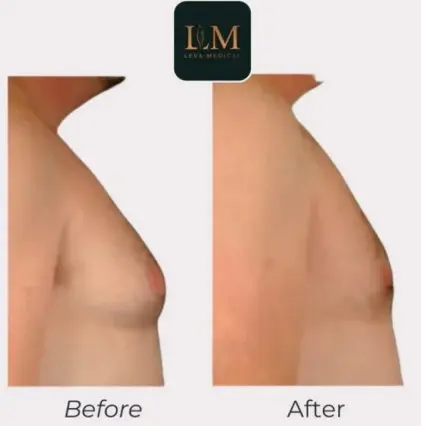Symptoms
A firm mass of disk-shaped tissue under the nipple-areola complex or a rubbery or firm mass that can be felt, are often the common symptoms of gynecomastia. Other symptoms might include tenderness, bloody discharge from the nipple, and in rare cases, pain.
Diagnosis
To diagnose gynecomastia accurately, doctors use a variety of methods including a detailed medical history, physical examination, and several other tests like blood tests to evaluate liver, kidney, and thyroid function, hormonal levels, and possibly imaging tests like mammograms or ultrasounds.
The Gynecomastia Pinch Test
The gynecomastia pinch test is a non-invasive, initial diagnostic method. In this test, the patient removes their shirt, and the doctor or healthcare professional will gently pinch or examine the breast tissue around the nipples and areolae for any rigid masses or movable tissue.
Interpreting the Results
The results of the pinch test can provide a preliminary understanding of the condition. The presence of a firm, disk-shaped tissue beneath the nipple could indicate true gynecomastia, while the presence of a soft, squishy, or movable tissue might suggest pseudogynecomastia, an enlargement of male breasts due to excess adipose tissue (fat), without the presence of actual glandular breast tissue.
MALE GYNECOMASTIA
Otoplasty is a type of ear surgery aimed at changing the position of the ears, typically to improve facial proportion and aesthetic balance. This procedure is often sought by individuals who are self-conscious about their prominent ears, which can sometimes attract unwanted attention. The primary goal of otoplasty is to bring the ears closer to the head, thereby reducing their prominence and creating a natural-looking fold.
Pseudogynecomastia
For pseudogynecomastia, lifestyle changes such as a well-balanced diet and exercise, specifically, weight loss and building pectoral muscles, can help get rid of the excess fat.
Gynecomastia Surgery
In cases where the enlargement of the male breast is attributed to the proliferation of glandular tissue, or when lifestyle modifications do not yield the desired results, it's prudent to explore surgical intervention as an alternative. The surgical procedures meticulously tailored to address gynecomastia encompass liposuction, which targets the removal of excess fat and glandular tissue, and mastectomy, with emphasis on the double incision technique, to expunge the entire breast gland tissue. In the more severe cases, where the skin has been significantly stretched, the surgeon may also opt to carry out skin reduction. This is coupled with the repositioning of the nipple-areola complex to replicate the natural contours and features of the male chest, thereby achieving a more aesthetically pleasing outcome. These procedures are generally conducted by adept cosmetic surgeons who hold a specialization in gynecomastia treatment. It's worth noting that patients should also consider the surgeon's grades - their board certifications, expertise, and patient reviews - as these are paramount in ensuring that they are receiving the highest standard of care and skill during the procedure. Ultimately, the goal of these interventions is to bestow upon the patient a firmer, more sculpted male chest, enhancing not only their appearance but also their self-esteem and quality of life.
Psychological Impact
It's worth noting that although gynecomastia is not a life-threatening condition, it can cause psychological distress and embarrassment for the person suffering from it. Thus, obtaining a correct diagnosis and choosing the best treatment plan is crucial for patients aiming to return to a normal life. Consulting with a gynecomastia specialist and thoroughly understanding the condition and the potential treatments is a step in the right direction towards managing this condition effectively.




-2.jpg?width=2000&height=2000&name=Copy%20of%20YouTube%20Thumbnail%20-%20Life-Changing%20Cosmetic%20Surgery!%20(Document)-2.jpg)

